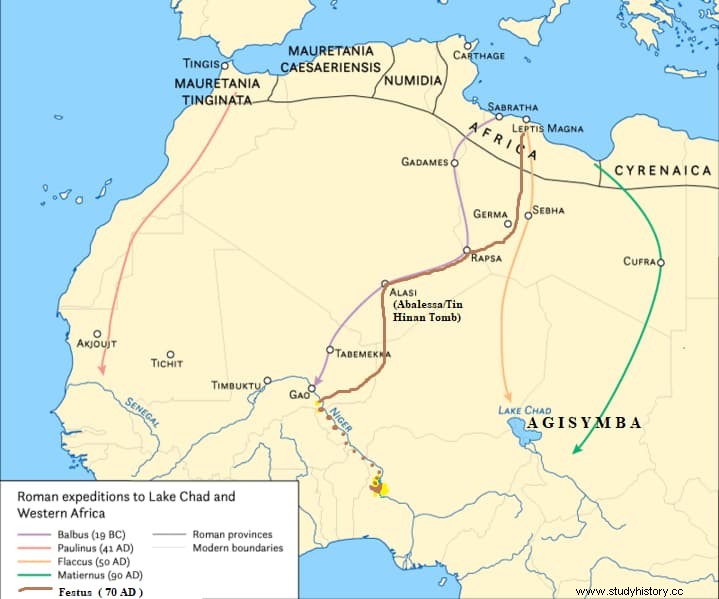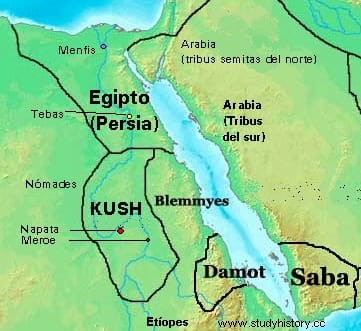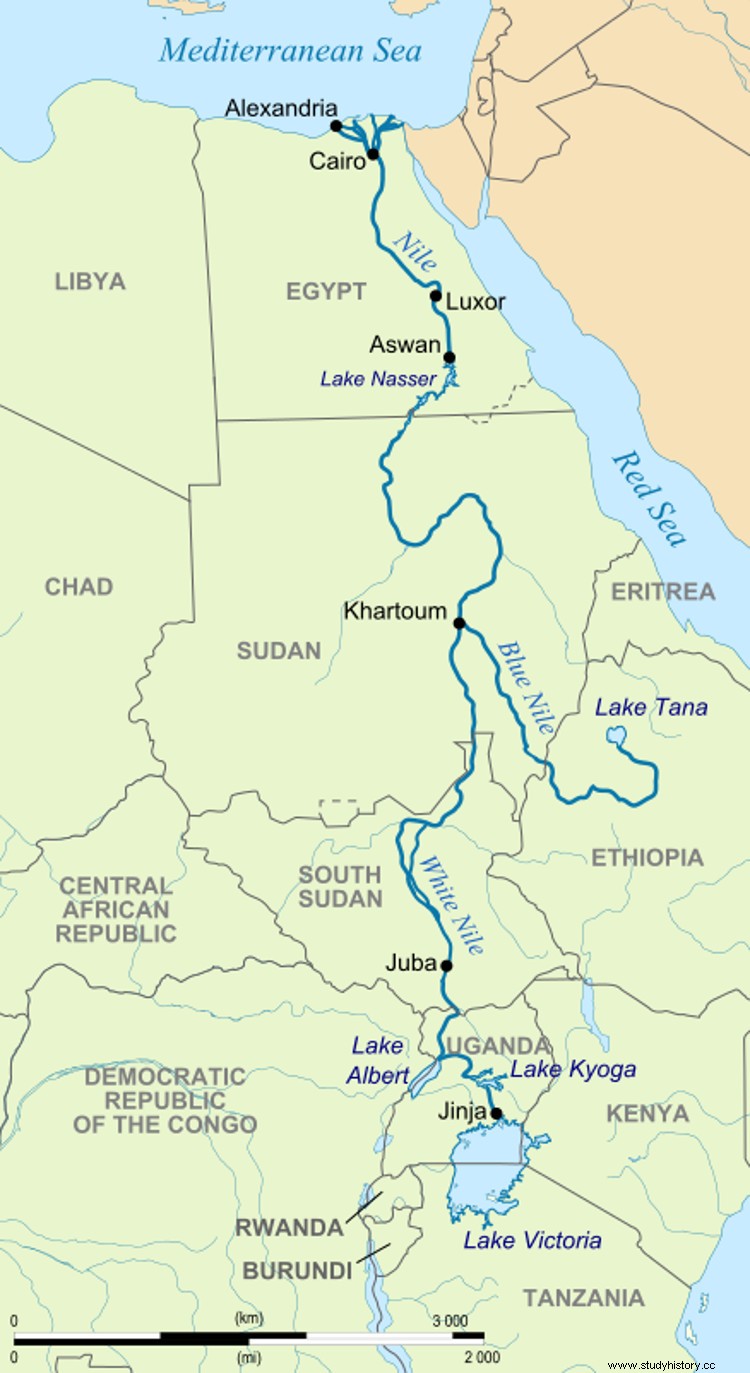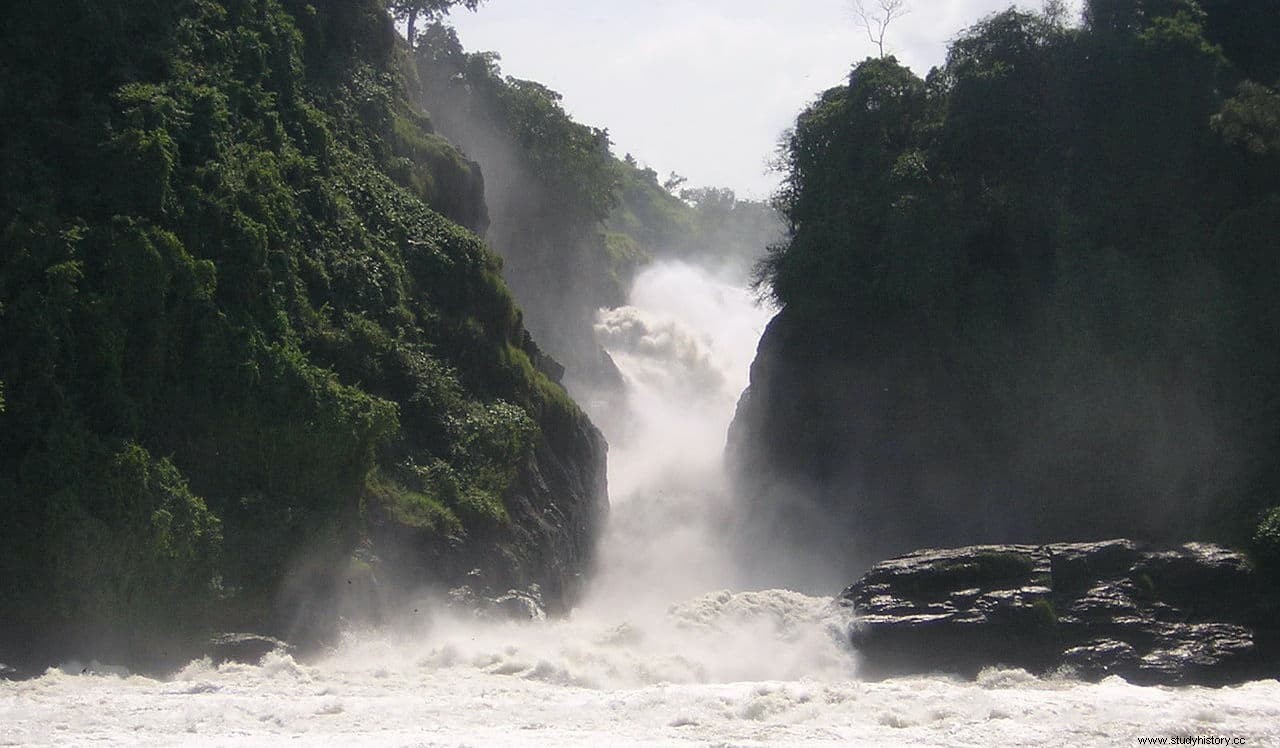The History of the great nineteenth-century explorations tells us that the discoverer of the Murchinson Falls was the adventurous aristocrat Samuel Baker, who in search of the sources of the Nile arrived at that magical place in 1864 accompanied by his wife Florence and named them in honor of the president. of the Royal Geographical Society; We told it in a previous article. Now, are you sure someone didn't come before? It seems so, and not only before but almost two millennia in advance:there are historians who believe that this honor would correspond to an expedition sent by the Emperor Nero himself.
As we explained recently in the article dedicated to the Roman expeditions in sub-Saharan Africa, the empire did not penetrate much into the black continent and limited itself to controlling and exploiting the Mediterranean coast, which it divided into several provinces:Mauretania (Tingitana and Cesariensis), Numinisa, Africa Proconsularis, Cyrenaica and Egypt. But there were several attempts to go beyond the Sahara desert documented by Pliny the Elder in the Natural history of him :there were five, led successively by Cornelius Balbus, Suetonius Paulinus, Septimius Flaccus, Julius Maternus and Valerius Festus, all of them during the 1st century AD
However, these unusual expeditions, fundamentally for commercial purposes, were carried out in the same direction:the area that extends from the African Atlantic coast (which would include from present-day Morocco to Guinea, including the Canary Islands, Madeira and Cape Verde, visited by sea) , to the region that Ptolemy baptized as Agisymba, in the surroundings of Lake Chad, passing through the one bathed by the Senegal and Niger rivers. But around the year 61 A.D. Emperor Nero organized another with a different itinerary, going up the Nile to its sources to gather information about these unknown lands with a view to the invasion of Ethiopia that he was planning.

The Roman world, in those latitudes, ended in Meroe, a place that we know today for the hundred sharp pyramids that emblematically characterize its monumental heritage. At that time, Meroe was part of the ancient kingdom of Kush, which extended through the region of Nubia (north of present-day Sudan, to the confluence of the White Nile with the Blue Nile). A place rich in gold and other products that attracted the greed of the Egyptians, who conquered it in a campaign started by Mentuhotep II and ended by Sesostris I, during the Middle Kingdom, although a second invasion was later necessary during the New.
Paradoxically, centuries later the Kushites reversed the tables and took control of Egypt by establishing their own dynasty, that of the so-called black pharaohs, who reigned between 751 and 656 BC. With the Assyrian invasion of Egypt, they withdrew to their land, moved the capital from Napata to Meroe and remained independent, later repulsing the Persian Cambyses II's attempted conquest, at least in part. Then the Romans appeared, who in the 1st century B.C. They annexed Egypt, made it a province, and Augustus appointed his friend Gaius Cornelius Gallus as the first governor.
Gallus was a poet praised by Virgil and Ovid but he was not there for his artistic virtues but for his military ones, which were put to the test by a rebellion in the northern part of Nubia. That forced him to pass the First Cataract, take the island of Filé and, finally, sign an agreement with King Teritegas of Meroe, who agreed to be a vassal of Rome. Cassius Dio says that success went to Gallus's head and he ended up accused of disrespecting the emperor, for which he committed suicide.

As Augustus had to send a good part of the three legions stationed in Egypt to conquer the Arabian peninsula, Teritegas took advantage of the occasion to take up arms against Egypt, since he was dissatisfied with the abusive management of his nomarchs, successfully attacking the south in the year 25 B.C., as reported by Strabo (who was then living in Alexandria). The interim governor, Petronius, came to meet them and defeated them at Pselchis.
The enemy king had died suddenly shortly before and was succeeded by the kandake (queen) Amanirena, who found herself in a difficult situation:the Romans were advancing unstoppably on Napata and rejecting her offer of peace. Fortunately, after taking the city they decided to return before the imminent arrival of summer and since they did not know what lay beyond. Amanirena ended up signing a treaty with Augustus that was beneficial for both, but after the death of the emperor, the influence of Rome in the country experienced a setback.
For this reason, what was to the south remained unknown, beginning with the source of the river that formed the backbone of the country. Pliny the Elder he left written that “the sources of the Nile have not been determined. It flows through scorching deserts over an immensely long distance and has only been explored by civilian researchers." . Speculation about beyond Meroe spoke of great ebony forests and mountains of fire, of unheard-of beasts and dwarf men.

Thus, everything seemed propitious for Nero to devise the aforementioned trip to Ethiopia, the name that the Greeks had given to Kush. For this preliminary exploration he appointed a contingent of Praetorians led by a tribune and several carefully chosen centurions. They left Egypt in AD 61. in the direction of Meroe, where they met with King Amanikhabale assuring that they were looking for the sources of the Nile and hiding the conquest plan. He "provided them with assistance and gave them letters of introduction to neighboring rulers" , according to Seneca in his Natural Questions .
From there they advanced almost a thousand kilometers discovering that the twenty cities that the Greek books reviewed had been in ruins for centuries. Leaving behind the Fifth Cataract and the Nubian desert, they entered a greener land where elephants, baboons and rhinos lived, entering the Sudd. It is a vast swampy region in southern Sudan basically made up of three riverbeds that we know today as the Bahr el-Zeraf (Giraffe River), the Bahr al-Ghazal (Gazelle River) and the Bahr el-Jebel ( River of the Mountains), the latter the main branch of the White Nile.
In the rainy season it can extend up to thirteen thousand square kilometers, so it is not difficult to understand that the march was painful and slow, between suffocating heat, high humidity, rotten vegetation, papyrus, crocodiles, hippos and mosquitoes. As it was almost impossible to move stepping on that muddy bottom and there was also no depth for boats, the Romans, short of food and many of them affected by tropical diseases, decided to turn around and end their journey.
“We came to great swamps whose borders even the natives did not know. We couldn't find the limits of that place» Seneca account they said. It is estimated that they had traveled almost two thousand five hundred kilometers from the Egyptian border, but the story that two legionnaires told Nero about a curious and suggestive geographical feature remains to be clarified, and that Seneca again collected:«There we saw two enormous rocks , from which flowed a river of immense flow…» The soldiers claimed that this water came from a large lake that was further inland.
The description seems to fit the Murchinson Falls, a river fall that is not very high (forty-three meters) but in which the river, coming from Lake Victoria and heading towards Albert, passes through a narrow channel between large rocks separated by just seven meters and acquiring an enormous pressure of three hundred cubic meters per second. If they really saw that spectacle in person, it means that they arrived at Jinja, in the northern part of the lake; that is, to Uganda.

Although Seneca was skeptical, Nero did believe that story and took the triumph of having discovered the sources of the Nile, the Caput mundi , with his usual capacity for artistic staging, appearing in public surrounded by Africans and organizing events in which he put Ethiopians as extras, according to Dio Cassius. The conquest plan was launched with the sending of troops to Egypt, including the XV Apollinaris Legion. , which had just pacified Parthia, and a recently created auxiliary unit, with men from the Africa Proconsularis, called Ala Siliana .
But in 66 AD the plan went awry when the Jews rebelled and that legion had to be sent to put down the insurrection (by the way, their general was Titus, the future emperor). Two years later Nero committed suicide and while four candidates disputed the throne, Ethiopia fell into oblivion. With her, the odyssey of some soldiers who could have discovered the sources of the Nile exactly one thousand eight hundred and three years before Samuel Baker.
